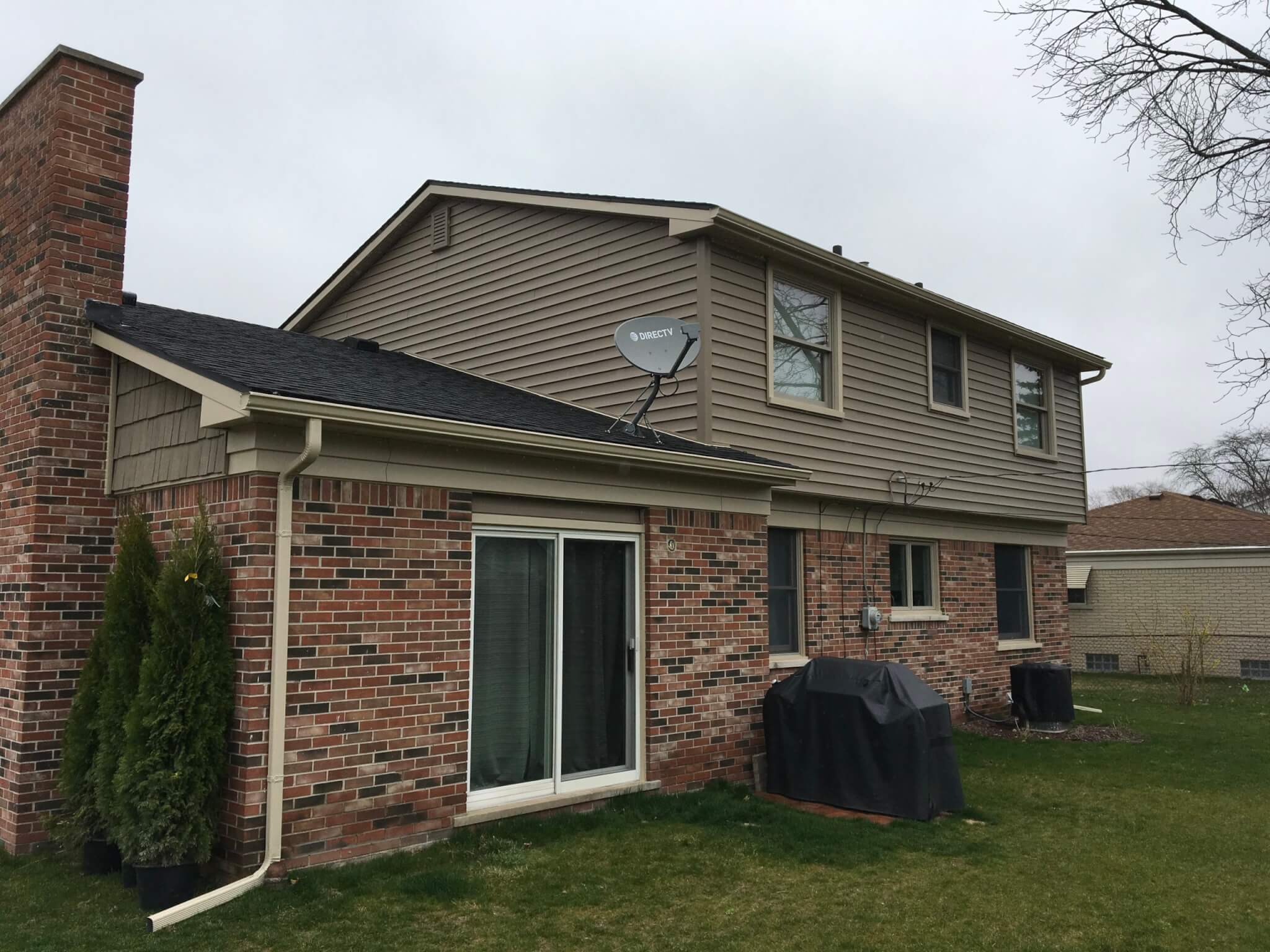The Top Signs It’s Time for a New Roof
If you are in the market for a new downriver home, you will want to know the age of the roof and how much longer it will last. Likewise, if you have been in your home for a while, you also want to understand the current condition of the roof and whether it’s time to consider what replacement options you have.
Let’s take a look at the expected lifespans of some of the most popular roofing systems for homes. You can use this to assess the life expectancy of any roof whether you are buying a new home or planning for a future roof replacement or upgrade in your current home. A typical asphalt shingle roof will last between 15 to 25 years before requiring replacement. With that said, there are several different types of asphalt shingles, in addition to other roofing materials to consider when estimating the longevity of a particular roofing system.
Asphalt Shingles
3-tab shingle is the most basic and least pricey asphalt shingle option for sloped roofs. A typical 3-tab asphalt shingle roof should last between 10 to 20 years.
3-tab shingles are a decent option for temperate climates, but they are not suitable for storm-prone areas. The maximum wind-uplift a 3-tab shingle roof can endure is 60 MPH to 70 MPH.
Architectural, otherwise known as Dimensional Shingles, are thicker and therefore more durable and last longer than their entry-level counterparts, three-tab shingles. Most architectural shingle roofs will last between 15 to 25 years, depending on their environment. The maximum wind uplift for the majority of architectural shingle products is 110 MPH. With a special installation method and roof-frame bracing, this can be increased to 130 MPH.
Premium Shingles are more aesthetically pleasing asphalt shingles designed for premium homes. A premium shingle is normally thicker and lasts longer than a mid-range architectural shingle. The expected lifespan of a premium shingle roof is between 20 to 30 years, depending on the environment. Wind uplift ratings for premium shingles are like architectural shingles. Premium shingles may also have special properties like enhanced solar reflectance (aka CoolRoof) rating and impact resistance for hail prone areas.
Signs it is time to consider replacement: If the asphalt shingles on your roof are showing major cracks, lost a lot of sand granules, are chipping, and look dry or curled up, then you know it’s time for a new roof.
If the shingles are still in good shape, but the roof has sustained major storm or hail damage, then it’s time to consider replacement or partial replacement.
Concrete and Clay Tiles
Clay tiles are a great roofing option for premium homes. Clay tiles are very heavy, and you must have a specially designed roof frame to support the weight of the roof. A properly installed clay tile roof should last between from 50 to 100 years. Clay tiles normally have good wind uplift ratings, but cracked, loose, or missing tile pieces create a hazardous situation during a hurricane.
Concrete tiles are like clay tiles in many regards including their heavyweight. They are a less costly tile roofing option, with an expected lifespan between 40 to 75 years.
Signs it is time to consider replacement: cracked or loose tiles and/or leaks that do not respond to simple repairs.
Cedar Shingles and Shakes
Comparable in cost to metal roofing, cedar shingles and shakes are a common roofing option for beach homes and cape cod style houses. Cedar shake roofs are designed to last 20 to 35 years on average. With regular maintenance, however, a cedar shake roof can last around 40 years.
A wind uplift rating of 110 MPH or higher can be achieved with a proper installation of cedar shingle/shake roof.
Signs it is time to consider replacement: Cracked wood shingles or leaks that are beyond simple repairs.
Natural Slate
Slate roofs are infamously expensive, heavy, and long-lasting. A quality slate roof can last between 50 to 100 years. Slate roofs are commonly installed on upscale homes.
Slate roofs have excellent wind uplift properties, but a few pieces of slate flying off of a roof during high winds be dangerous due to their weight and sharp edges.
Signs it is time to consider replacement: missing, or loose slates, or leaks that don’t respond to simple repairs.
Composite Roofs
Synthetic composite shingles and tiles are created to resemble natural slate tiles and cedar shakes. Composite tiles are strong, lightweight, and with proper installation last between 30 to 50 years or longer. In terms of cost, they are comparable to standing seam metal roofs.
A synthetic composite tile roofing system is rated to withstand straight-line winds of up to 110 MPH and hurricane grade wind uplift.
Signs it is time to consider replacement: Roof leaks that do not respond to repairs.
PVC and TPO Membranes
Both PVS and TPO membranes are single-ply roofing systems that offer a more durable and longer-lasting alternative to EPDM rubber. Because of the thickness of their reinforced membranes and hot-air welded seams forming a permanent bond at the seams, PVC and TPO roofs can last twice as long as EPDM rubber.
You can expect a lifespan of 20 to 30 years from these energy-efficient and long-lasting single-ply membrane roofs.
Signs it is time to consider replacement: Age approaching 30 years, loss of membrane thickness or hot air weldability with PVC, major cuts or roof damage from a fallen tree, untraceable leaks that don’t respond to repairs. Call Allpoint Construction for an Estimate.
